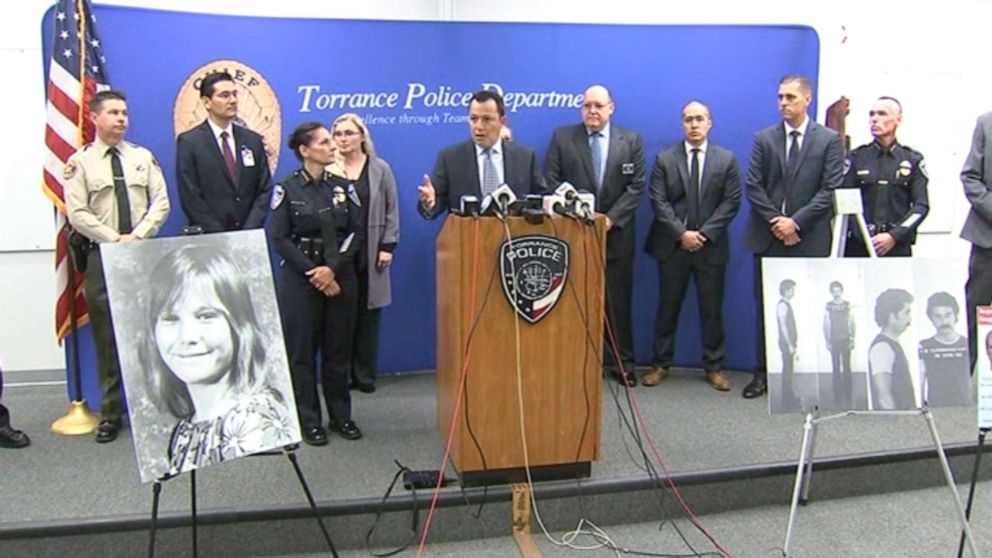DNA identifies suspect in 11-year-old's sexual assault, strangulation from 1972
Terri Lynn Hollis was sexually assaulted and strangled on Thanksgiving Day 1972.
Decades after an 11-year-old California girl was murdered, a suspect has been identified through the emerging investigative tool of genetic genealogy.
Terri Lynn Hollis went for a bike ride on Thanksgiving Day 1972 and never came home, Torrance Police Chief Eve Irvine said. The next day her body was found on rocks adjacent to the Pacific Ocean in Ventura County; she had been strangled and sexually assaulted, Irvine said.
Years ticked by without an arrest. This "senseless crime" "is what nightmares are made of and no family should ever have to go through such a tragedy," Irvine said at a news conference on Wednesday.
In 2000, the sexual assault evidence was submitted to the Los Angeles County Sheriff's Department's crime lab and the DNA was entered into the law enforcement database CODIS to try to match it to known suspected criminals -- but no hits were found, Irvine said. The evidence was used in familial DNA searches twice, but still no matches were found, she said.

In 2018, the investigative tool of genetic genealogy came into play, said Irvine.
Genetic genealogy compares unknown DNA evidence to public genetic databases to identify suspects through their family members -- and has been called a "game-changer" in the effort to crack cold cases.
Since the arrest of the suspected "Golden State Killer" in April 2018, at least 70 suspects have been identified through the technology, according to CeCe Moore, the chief genealogist at Parabon NanoLabs, which investigated the Terri Lynn Hollis murder among others. Moore has appeared as an expert in ABC News "20/20" episodes and ABCNews.com articles.
I only wish that my parents were still alive to see this.
In 2018, the DNA of the unknown suspect from Hollis's sexual assault was uploaded to GEDmatch, a publicly available database, where Parabon investigators found a match to possible relatives of the mystery suspect, said Irvine and Moore.
Detectives investigated further and determined a potential person of interest was Jake Edward Brown, who died of medical conditions in Arizona in 2003, said Irvine.
Brown's body was exhumed and bone remains were collected to obtain DNA, Irvine said, but after two attempts, officials were unsuccessful in obtaining usable DNA from the remains.
Detectives then sent the DNA to a lab in Florida, which was successful in extracting DNA evidence from Brown's bones, confirming Brown's bones "were a 1 in 20 septillion match to the evidence collected from Terri Lynn Hollis," Irvine said.
"It's amazing that we've come to this day," Terri's brother, Randy Hollis, said at Wednesday's news conference, where police identified Brown as the suspected killer.
Thanksgiving Day I always allow for a private moment to remember Terri.
"I only wish that my parents were still alive to see this," Hollis said, holding back tears.
Hollis was 16 when his sister was killed.
"A lot was taken from us that day and throughout my life," Hollis said. "Thanksgiving Day I always allow for a private moment to remember Terri."
Hollis expressed his appreciation for the detectives -- some of whom he said were not born at the time of the crime -- but still took his sister's case personally.
Brown was arrested for two rapes after Terri Lynn's murder -- one in 1973 and one in 1974 -- and served jail time, said Irvine.
Police are still investigating to see if Brown may have been involved in other unsolved crimes, said Irvine.




